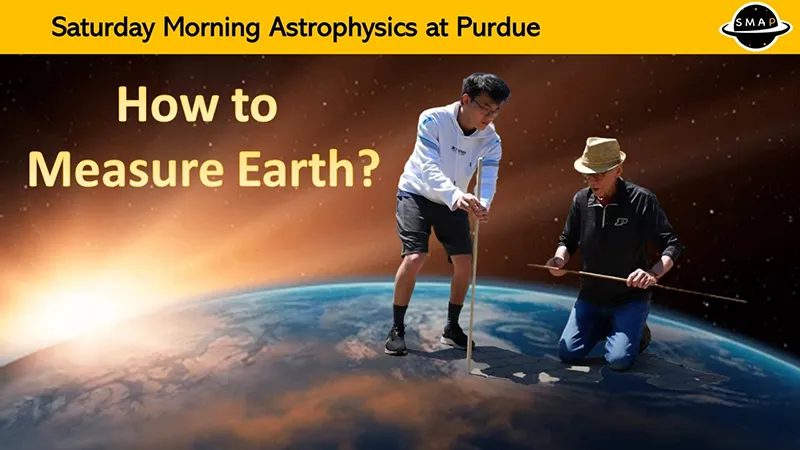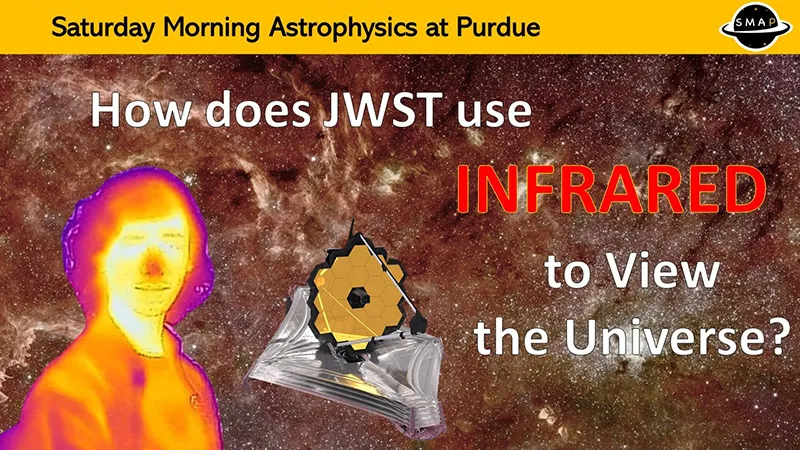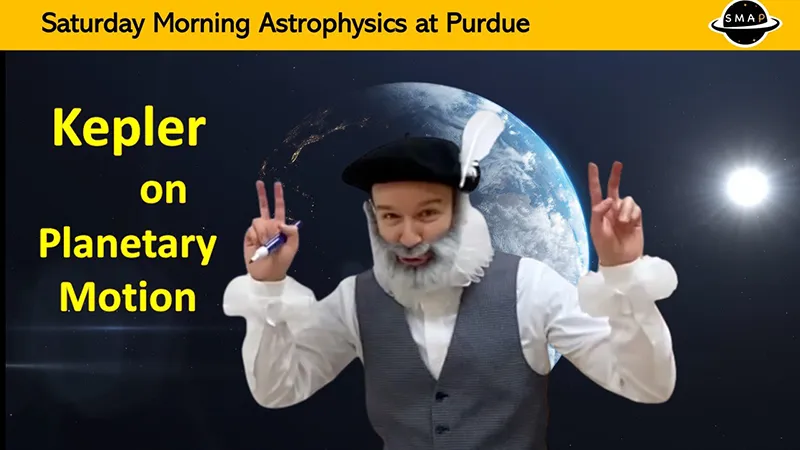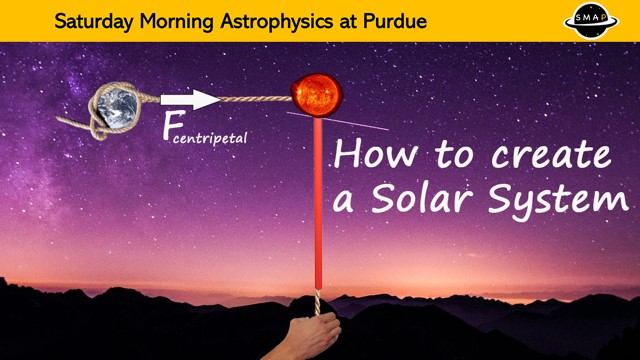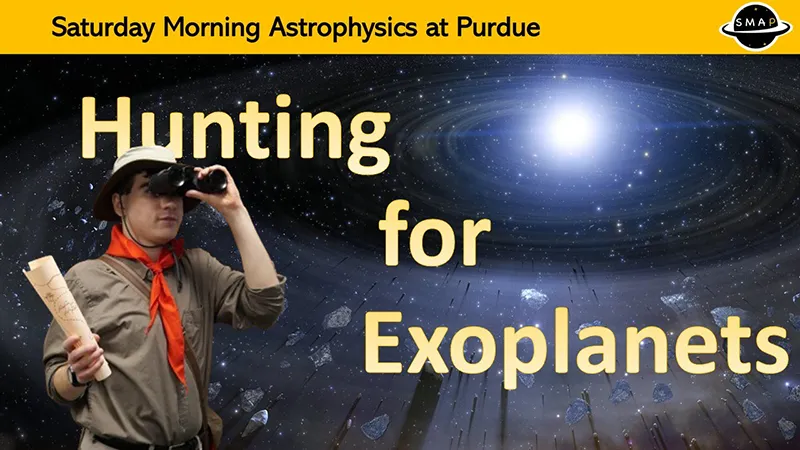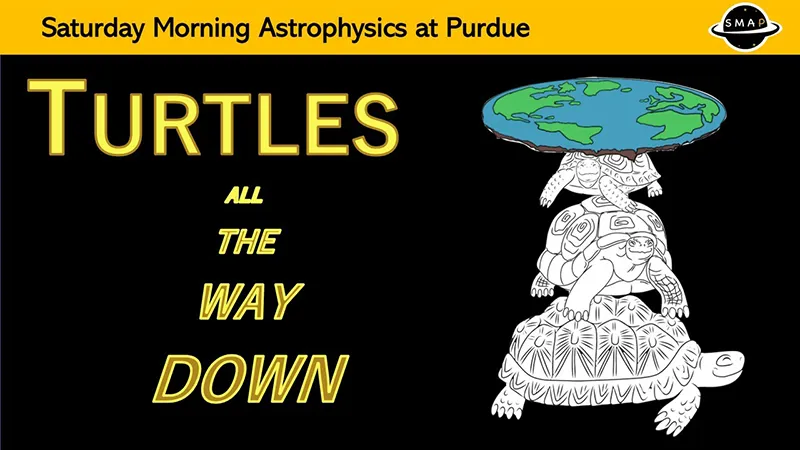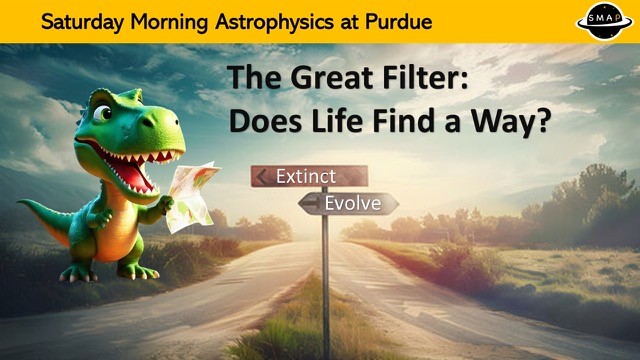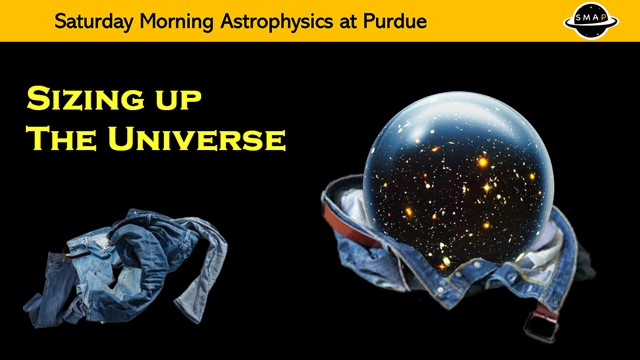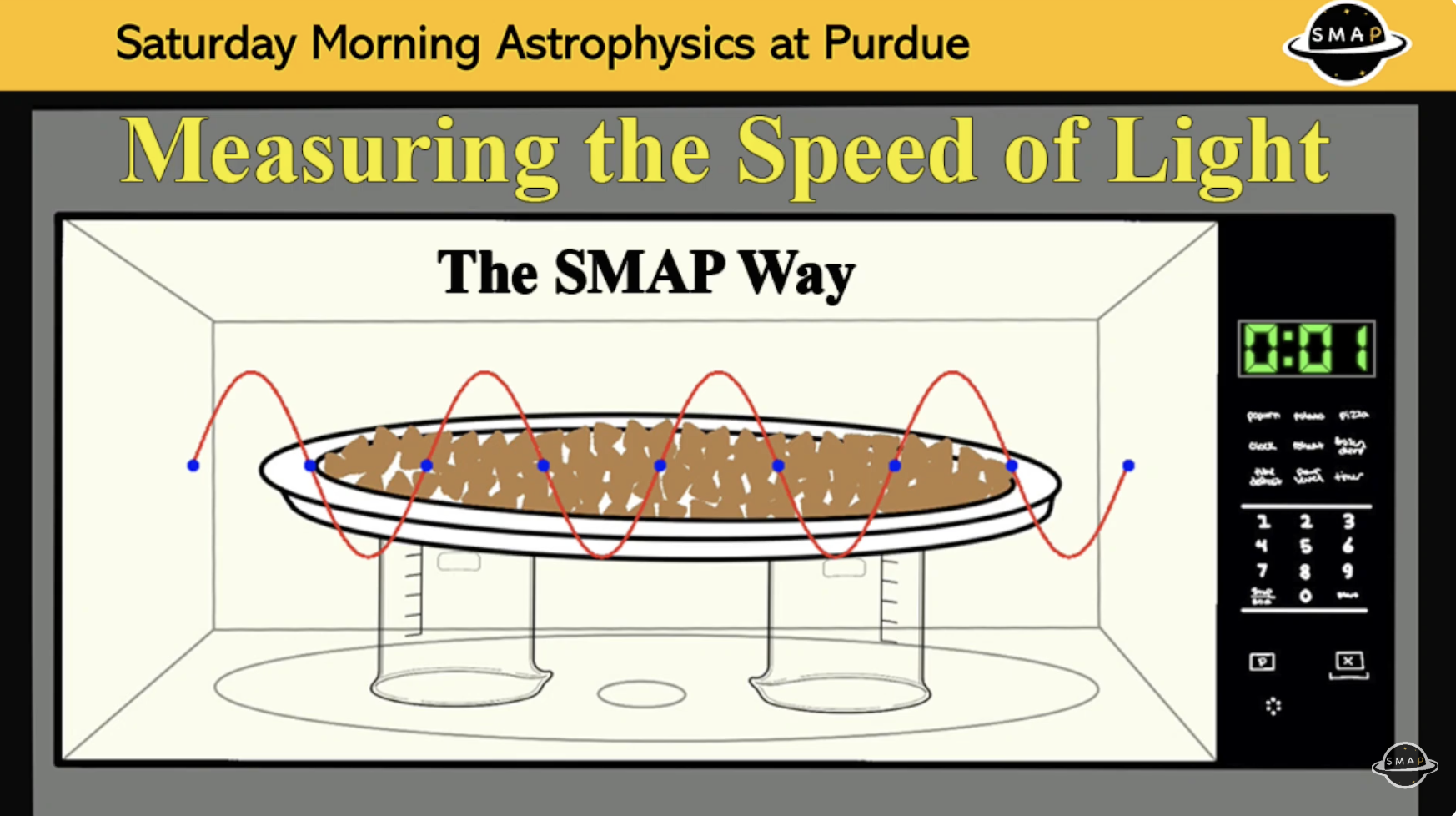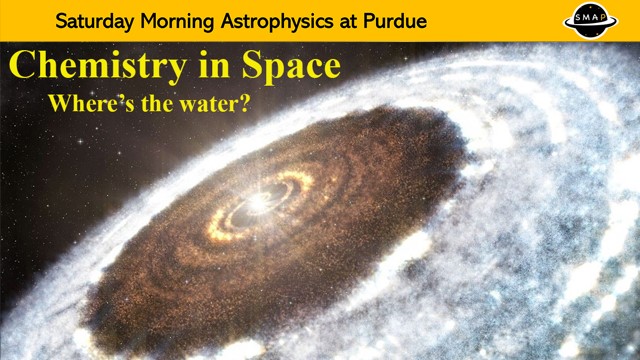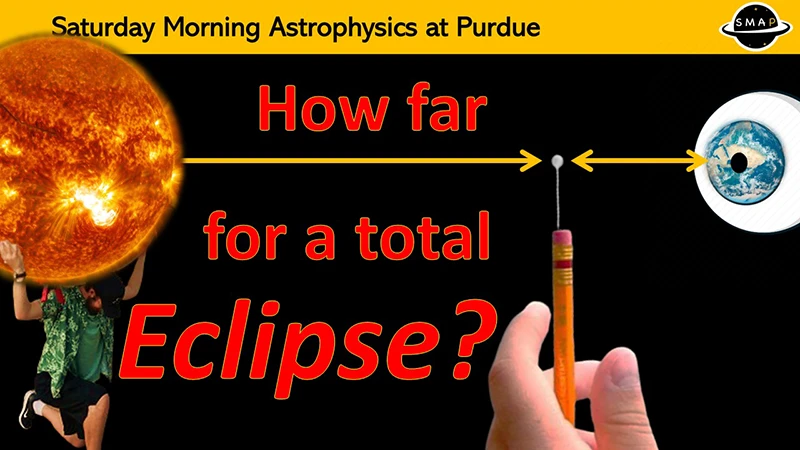Saturday Morning Astrophysics at Purdue
Saturday Morning Astrophysics at Purdue (SMAP) is one of our flagship programs in Physics and Astronomy Outreach, offering monthly remote programming for students in grades 8-12.
Explore the Cosmos with us!
- When: Third Saturdays monthly*
- Time: 11:00 AM Eastern (U.S.)
- Format: Live on Zoom
*Subject to change with holidays and special events.
Learn about things you do not typically hear about in school. Do experiments and activities with us at home, explore the structure and behavior of the cosmos, and talk with the experts. Learn cool stuff about what’s going on in space right now.
Grade 8-12 students: Want to catch our next session?
Grade 8-12 Students Sign up for SMAP
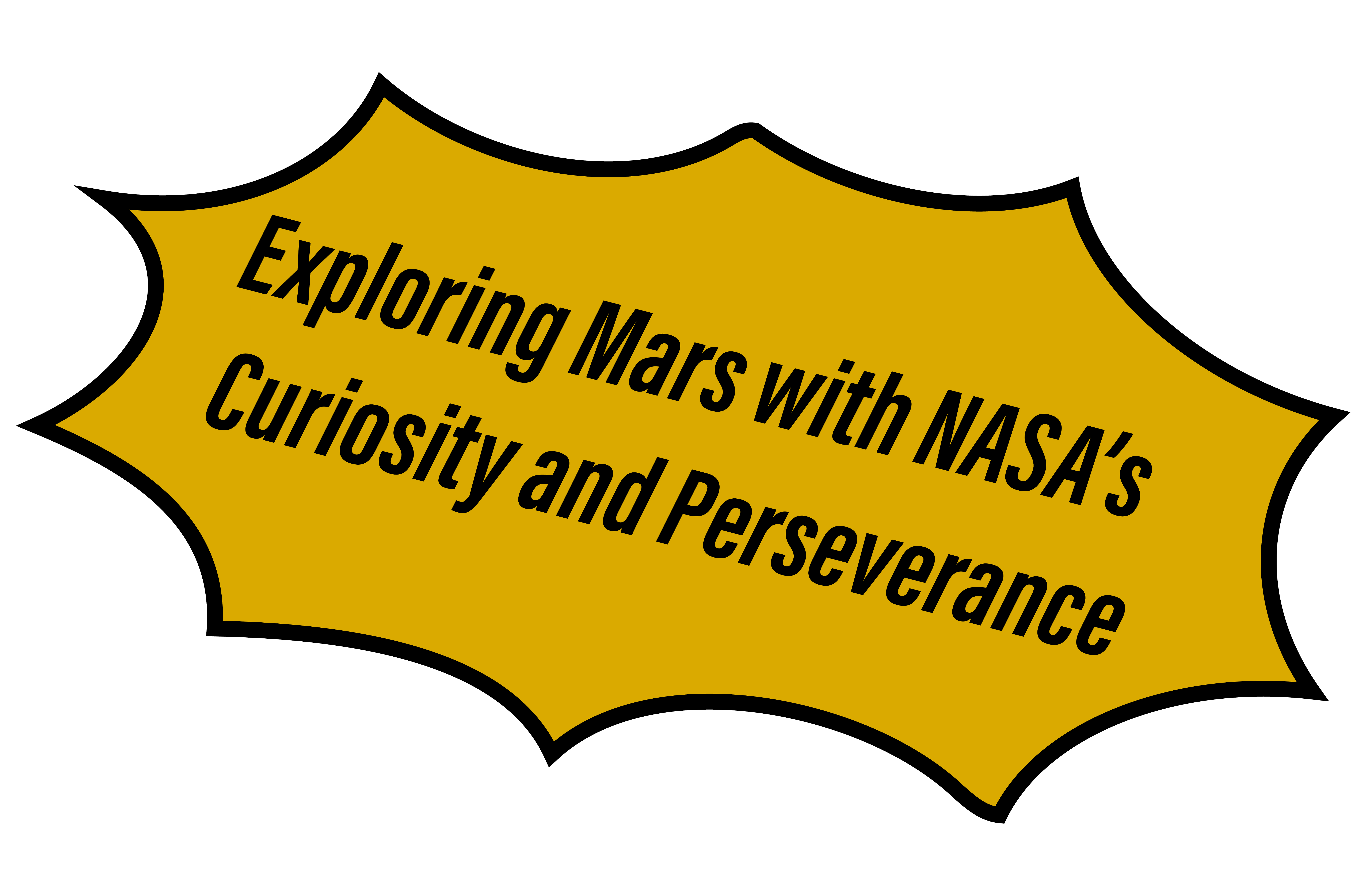
Coming Up Next: November 15, 2025
NASA has two 1-ton rovers currently exploring Mars. In this SMAP, we will explore designing and building the ChemCam and SuperCam instruments for these rovers and what we have discovered with them!
We will introduce you to discoveries of ancient times and cosmological marvels, as well as up-to-date current research. Check out Alan explaining how the James Webb Space Telescope images the cosmos with infrared light.
Astronomy faculty and staff, and an occasional “historical figure,” introduce SMAP sessions with the background and tools relevant to the topic in question – what is significant, what science is involved, what questions exist, what methods are used, and what do our findings tell us?
Curious to know more?
Check out some of our recent SMAP sessions and experiments.
In this SMAP Live, we take a look at the forces and circumstances that affect these rotating bodies, in this case, with our own Solar system. As an initial rotating cloud of gas and dust collapses under gravity, it begins to spin faster due to the conservation of angular momentum (similar to the figure skater pulling their arms in).
How do we search for unknown planets outside our solar system? Analyze your own data with the transit method and learn how astronomers tackle the issues. Could there really be life?
Ancient observers of the night sky only had their eyes, their curiosity and their imagination. Learn about successive attempts to understand the workings of our solar system in the science we call Cosmology.
If extraterrestrial life is plentiful, why haven't we made contact? If habitable planets are relatively common, could they be steaming with flora and/or fauna or even life more advanced than humans? Are there barriers that make it unlikely that life anywhere could advance beyond any given evolutionary stage? Philosophy on parade!
The early years of the 20th century brought evidence that the galaxies we were observing were not static in position, but rather appeared to be receding from our point of view. Could we be at the center? Is there a center? Are objects in the universe actually in motion? Are the apparent "velocities" of galaxies and other objects constant?
Did you ever think you could measure the speed of light at home in your own kitchen? Follow our safe and easy method and give it a try, and eat your experiment in the end!
The water on Earth is older than the sun and the solar system itself! Can you believe it? How do we know? This SMAP explores the debate on the origin of water on Earth, as well as on other planets in our own solar system and beyond. Asteroids and comets, you say? You may be surprised.
Here’s one for the teachers out there. A giant balloon, your eyeball and a pearl head pin is all you need to demonstrate a total solar eclipse to scale. Pretty cool!
Subscribe to the SMAP YouTube Channel
Grade 8-12 Students Sign up for SMAP
Teachers too! Educators, program directors, science administrators, we have you covered. Register here and we will notify you of upcoming sessions, videos, and latest experiments.
Teachers for SMAP Selected Lessons Classroom Poster PDF
For information about SMAP, Teachers for SMAP, our lessons and activities, please contact Purdue Physics and Astronomy Outreach Coordinator, Dr. David Sederberg, dsederbe@purdue.edu.
